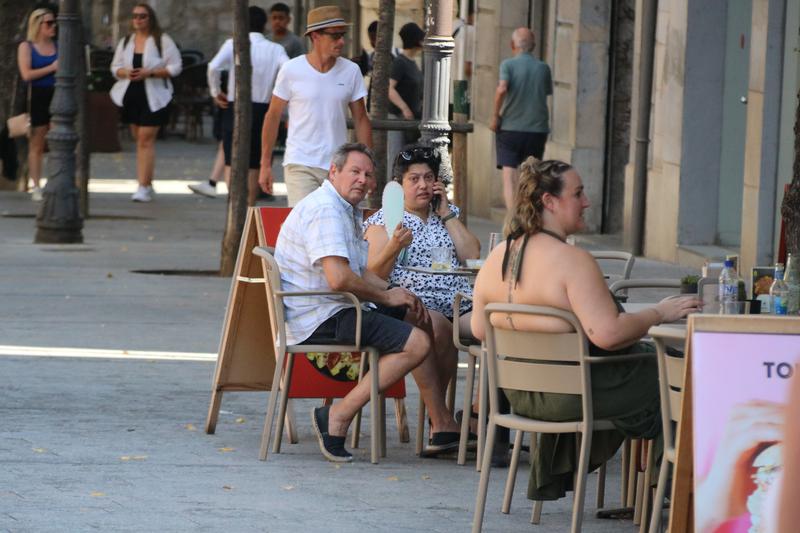Temperature in Catalonia reaches record-breaking 45.3ºC
Hottest day on record as northern villages of Figueres and Darnius surpass previous high of 43.8ºC from 2019

The highest temperature ever recorded in Catalonia since official records began was registered at Figueres, the Darnius Boadella reservoir and the village of Navata on Tuesday, all of them in the northern county of Alt Empordà.
Temperatures in Figueres reached 45.3ºC, 1.5ºC more than the previous high of 43.8ºC recorded in the western village of Alcarràs in 2019.
The previous record was also surpasessed in Darnius (45.1º), Navata (45.1º), Anglès (44.8ºC), Artés (44.4ºC), Banyoles (44.2ºC) and Castellnou de Seana (44ºC), and equalled in Bisbal d'Empordà (43.8ºC).
Other places that saw extremely high temperatures included Òdena (43.7ºC), Santa Coloma de Farners (43.6ºC) and Tàrrega (43.5ºC).
The Catalan Weather Service (SMC) indicated that 31 out of a total of 115 weather stations in their Network of Automatic Stations recorded an all-time record on Tuesday, based on more than 20 years of data.
'Very high-risk conditions'
The northern half of Catalonia faced what the Catalan Weather Service (SMC) classified as 'very high-risk meteorological conditions.'
The forecast on Tuesday morning included over 40ºC highs in cities such as Figueres (44ºC), Lleida (43ºC), Girona (43ºC), Manresa (42ºC), or Vic (42ºC).
No part of Catalonia was considered to be free of risk according to the SMC, with the remaining parts of the territory either at moderate or high levels due to the arrival of a mass of warm and dry air coupled with high insolation.
This latest heatwave, which is set to subside on Wednesday, is also bringing with it higher-than-average nighttime temperatures. The SMC warns of especially high temperatures in the early hours of Wednesday morning.
Six protected natural areas closed off
The authorities have closed off access to six protected natural areas - Cap de Creus, Serra de Montsant, the Montgrí Massif, the Garraf Massif, the Albera Massif, and the Montmell-Marmellar Massif - due to the elevated risk of wildfires.
A total of 57 municipalities in 8 different counties along the coast and inland have been placed in Level 3 - the highest - in the government's 'Pla Alfa' wildfire prevention plan.
This automatically bans any kinds of fires, smoking in the forest, camping in the wild, torch blowers, disc grinders, hot air balloons, and hunting in these areas.
Climate shelters
In the northern city of Girona, the city council has added the crypts of the cathedral to its network of climate shelters.
"Here there is room for 300 people who will be able to come for free," councilor Gemma Martínez explained.
The cathedral will open from 12 noon to 5pm on days when there is extreme heat, such as Tuesday.
The churches of Mercadal and Sant Narcís will also provide spaces where members of the public can take refuge from the heat.
"I have never experienced anything like this"
Darnius is a village in northern Catalonia of about 500 inhabitants which registered 45.1ºC on Tuesday.
Streets have been empty except for the few brave enough to head to the public swimming pool, which is free to the public during these heat-wave days.
Josep Baró is one of them, who also admits that he had "never before experienced such heat".
Harald and Berta Blumenthal are a German couple that has been spending their summers in the county for the past decade. Both of them confess that they had never lived through such high temperatures.